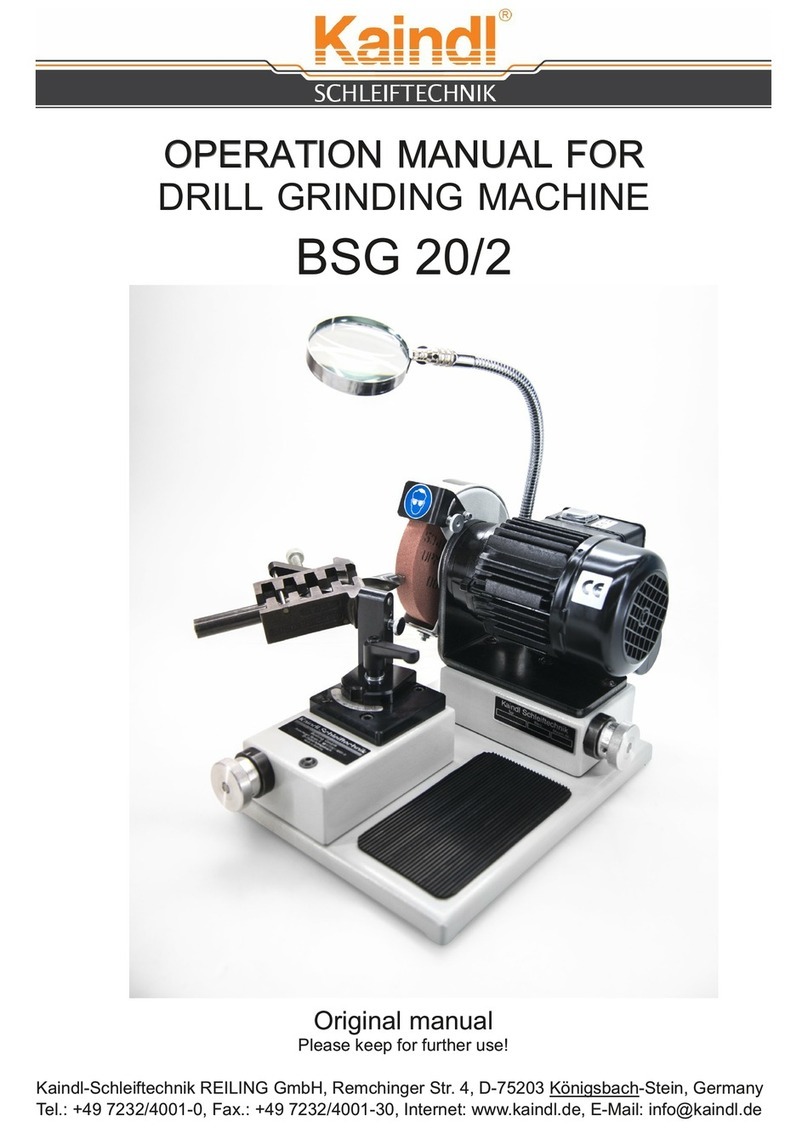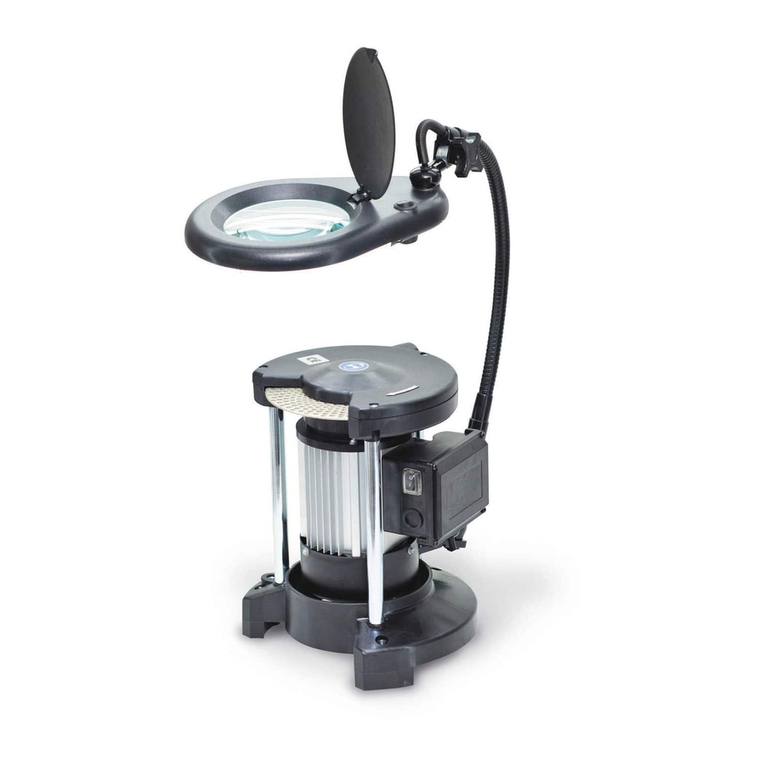5
Set up
The machine is packed in a box placed on a pallet. Unpack the machine at the
final working place. Before starting, please check the machine for transport
damage.
Environmental conditions for set up
Use the drillgrinder only in dry rooms.
Environmental temperature: from + 5° to + 50° C
Humidity: up to 90 %, not condensing
The BSG 60 is a table machine, may attention to a safe stand on your work table.
The place has to grant a vibration-free running of the machine.
Safety advise
Check if the grinding wheel is turning free, (eventually move back the prism support) in
case you don’t pay attention to this, the grinding wheel pay be damaged.
For continuous operation, please attach a suitable dust exhaust.
During all grinding work, wear safety glasses.
Please read this manual. For damage caused by lack of knowledge or not following
the operation manual, we do not assume any responsibility.
Directed use
The drill grinding machine BSG 60 is exclusively determined:
for occassional grinding of spiral, step-, wood-, Forstner-, sheet metal-, and stone
(carbide) drills and countersinks.
The directed use includes also reading this operation manual, as well as keeping all
containing directions of use- especially the safety information.
For all material- and personal damages, arising by not intended use, not the
manufacturer, but the operator is responsible.
Start up
Remove preservation (grease film)
Independing with which type of motor the machine is equipped with, please check:
a) is your electric current identical to the data on the name plate of the motor.
b) When you have a 400 V 3 phase motor , pay attention to a correct conection
of the rotating field.
On the back of the machine you find the electric switch with positions:
I – Einschalten (ON), 0 – Ausschalten (OFF).






























